If you follow STH Great Deals section on the forums, which you should, we saw WD Easystore 10TB USB Desktop backup drives deals start showing up, and many members here purchased a number of these. At the time we first spotted these threads they were running at $180 each which is a great deal for a WD100EMAZ 10TB hard drive.
For many organizations, 10TB external hard drives to provide NAS backups or even to send as a basic form of offline data transport make sense, especially at these prices. Indeed, just AWS data transfer costs on 10TB will exceed the price of two of these devices plus overnight delivery making them a viable transport option, especially where WAN connectivity is weak.
These Western Digital 10TB drives have a secondary use, namely as a less expensive way to get internal hard drives. Inside the WD Easystore 10TB external devices are 10TB helium-filled SATA III hard drives. These are generally white label WD WD100EMAZ 10TB hard drives but we have heard of some containing WD Red variants. In either case, at this time WD 10TB Red NAS drives are going for over $300, so these Easystore drives are an excellent price. Back in 2011, we discussed the value of a hard drive warranty versus shucking drives from external devices like this.
At STH, we purchased several dozen of these kits and wanted to take a look at just what we got in the process and share some of our experiences shucking the drives.
Shucking a WD WD100EMAZ from an Easystore 10TB USB Enclosure
Instead of focusing on a USB 3.0 external enclosure, we are just going to show what our readers are doing and we have done in the lab. We are going to liberate these 10TB drives from their enclosures. The WD Easystore 10TB drive comes as a regular USB 3.0 storage device; we purchase these kits to shuck the drives out and use them in our large NAS storage boxes or servers. There are plenty of videos that show how to shuck the drives. It is rather simple to do, and if you take care, you can reuse the enclosure itself, even install another SATA HDD inside and continue using the drive enclosure. The other option is that you pry for speed and discard the enclosure.
We used the clumsy method with a screwdriver and popped the other case off with no issues.
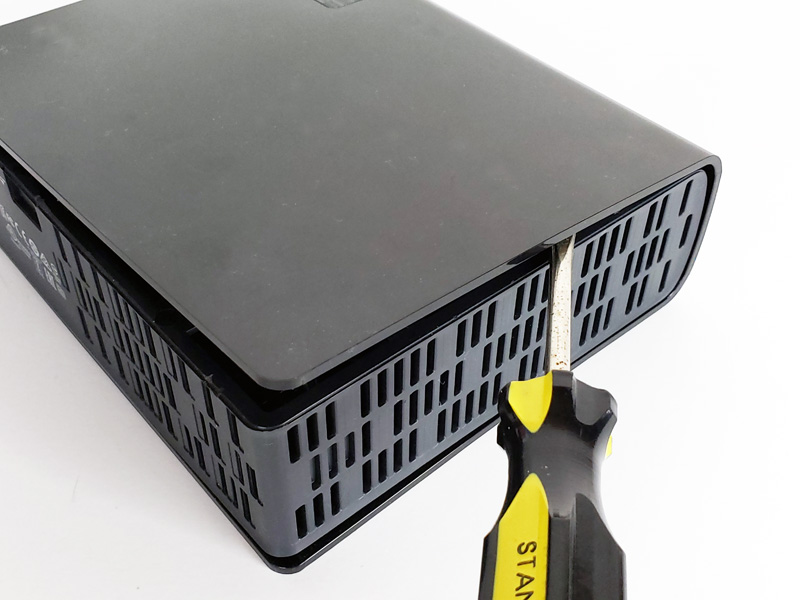
After removing the outer shell, we find a WD100EMAZ 10TB white label HDD inside. This is a helium-filled 256MB cache drive, like the WD Red 10TB solution.
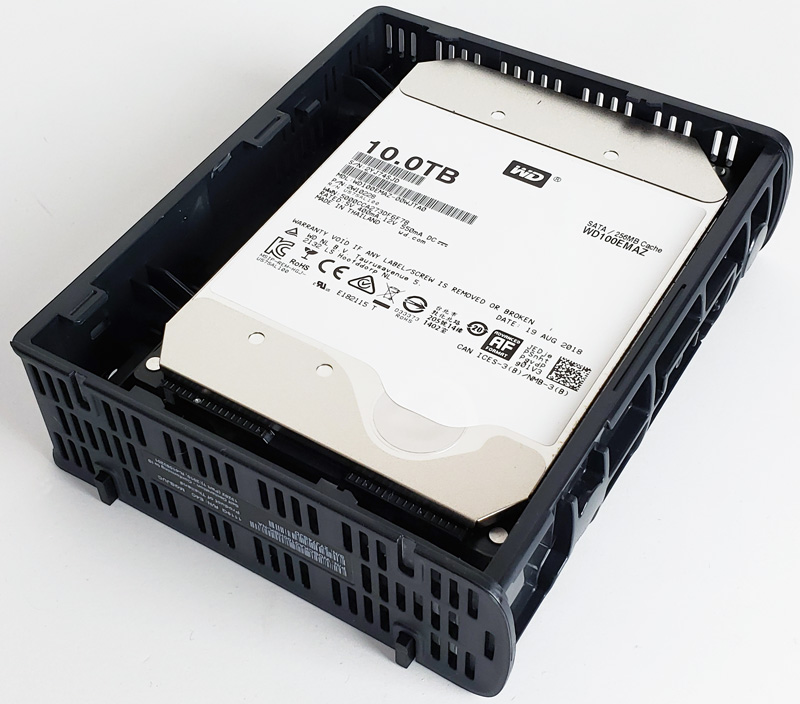
Flipping the enclosure over we see how everything is laid out inside the kit.
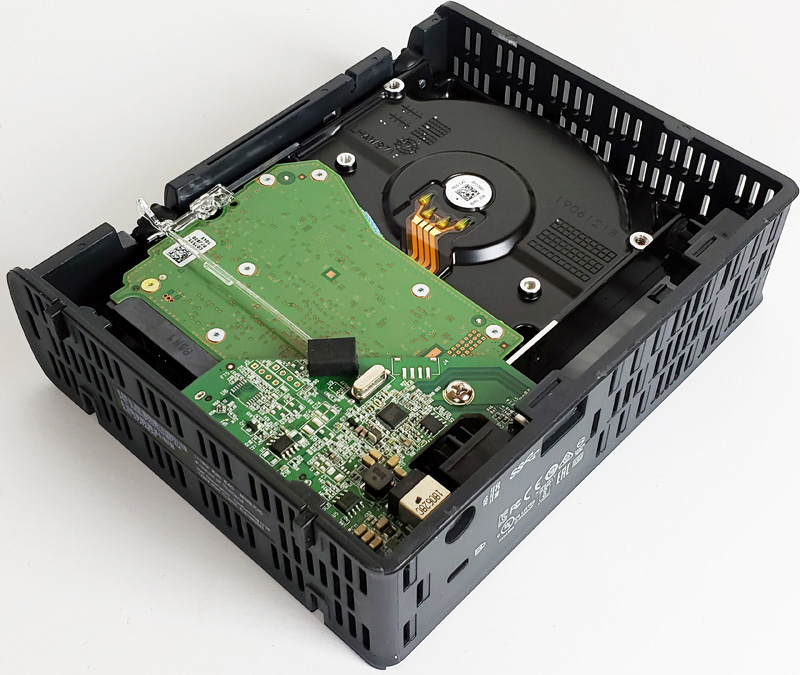
The small circuit board inside is merely a USB to SATA adapter and power port to supply power to the drive via a small power brick. The PCB is held in place by one screw.
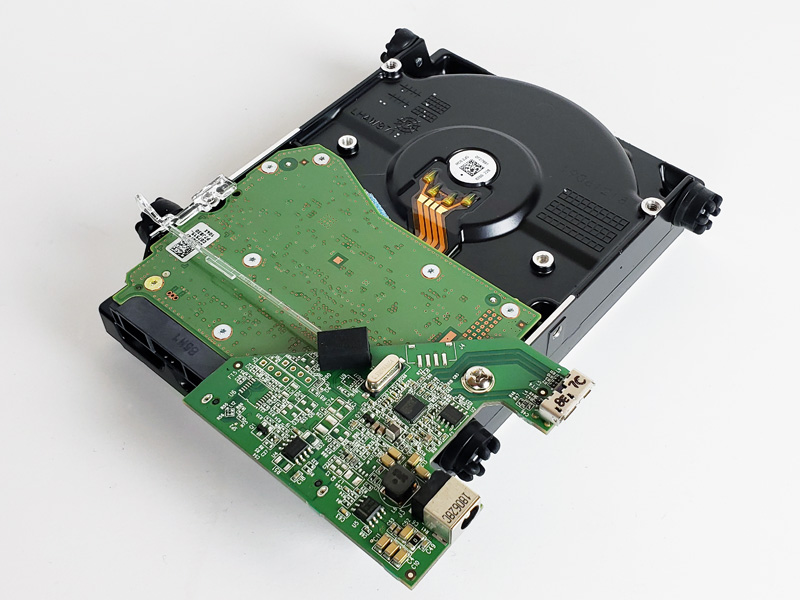
We have taken all the parts out and ready to start testing the HDD.
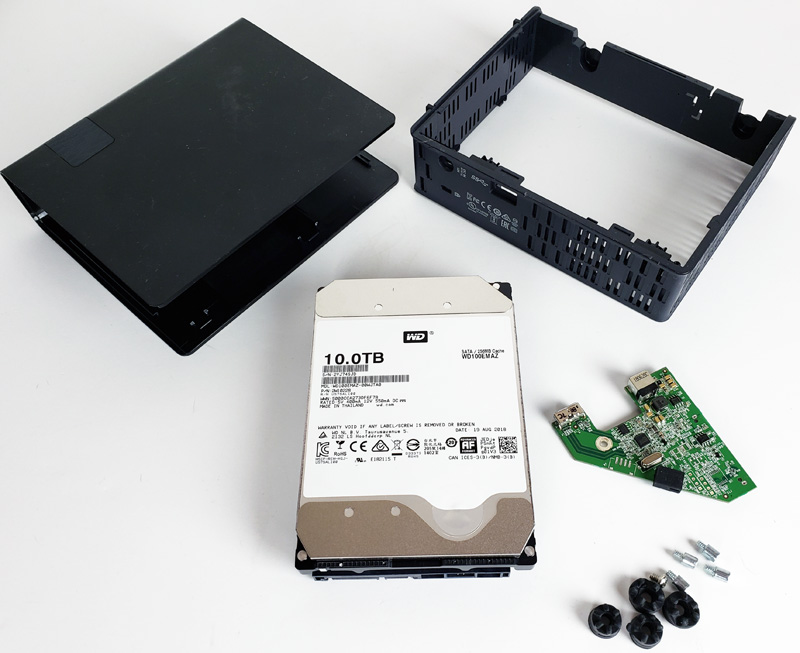
Here we have the entire enclosure taken apart; there is a small number of parts, the unit can be put back together and reused, even with different SATA HDD.
Addressing the WD100EMAZ 3.3V Pin Mod
With older power supplies you might find the WD100EMAZ will not show up at all in your BIOS or Windows. We had this issue on our test bench and found we required the 3.3V Pin mod to have the drives work. Just cover the 3rd pin with tape or non-conductive/ corrosive varnish to stop electrical current from passing.
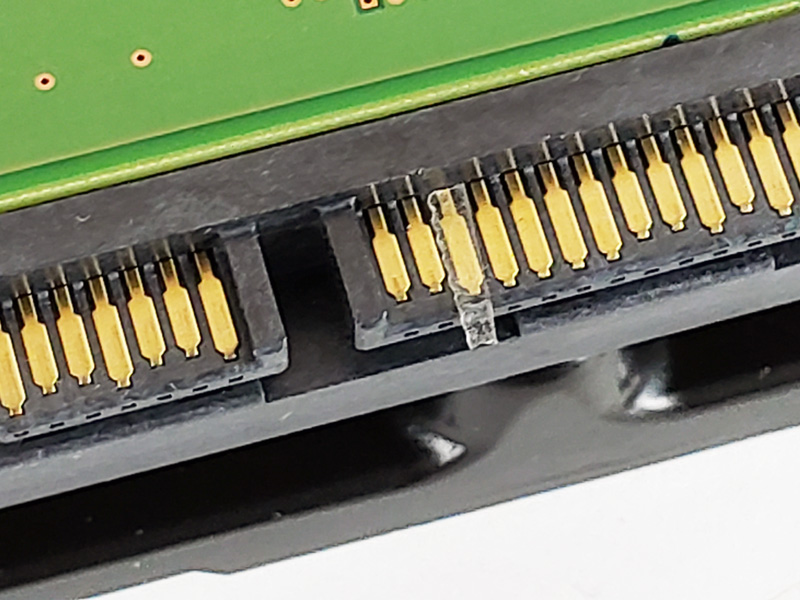
At STH we have now tested these in a few servers we have in the lab and have not had to do the 3.3V mod in them to date. These include:
- HPE ProLiant ML110 Gen10
- HPE ProLiant MicroServer Gen10
- HPE ProLiant DL385 Gen10
- HPE ProLiant ML30 Gen10
- Dell EMC PowerEdge T140
- Dell EMC PowerEdge T340
- Dell EMC PowerEdge R240
- Dell EMC PowerEdge R340
- Supermicro SYS-5019C-MR
- Supermicro AS-1013S-MTR
- Supermicro AS-4023S-TRT
- Supermicro SSG-5029P-E1CTR12L
- Gigabyte R151-Z30
Most of the systems we review these days are 2.5″ bay systems but we have a stack of these drives on hand that we use to test in servers. You may also notice that there are five servers on that list we have not reviewed. It may be a glimpse into some of the server reviews we are doing in Q1 2019.
Next, we are going to look at the software before focusing on drive performance.

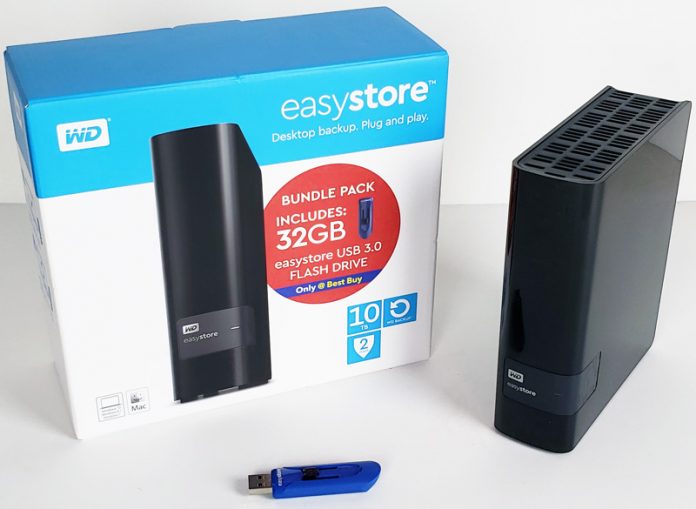



I like that a big site actually did this. Good to know there’s a difference even if it’s small.
I did this with the MyBook 8TB drives 2 years ago and put them in my OMV Nas. 6 months later one totally died. At that point I got a IronWolf drive as a replacement to have some differentiation. The other MyBook drive has been chugging along for the last 2,5 years though.
I got 6 of the 8TB version about a year ago. Of the 3 that I’ve pulled so far, all are the WD80EFZX. One is being used as purchased and the other 2 are waiting to be opened probably, once I figure out my longer term NAS setup.
My 2 cents – get a good power supply like a Seasonic Gold or Titanium if you’re having problems with drive failures. My combination of 40 plus various Seagates, WD, and Toshiba have never experienced a drive failure. Drives do fail of course, but clean power is important.
I just got two of the 8TB yesterday they were both the EFZX, even between the two one was about 5-10MB/s faster when I did a 4 hour burn-in. Neither had any 3.3v issues in my system. One was straight to the MB the other was in a 3 disk hot-swap enclosure I got off of Amazon.
sorry I meant EAMZ same at the 10TB
I have a question, WHY can’t these drives be set up so that there is a DUEL storage system. Like you write to you D: Drive and it automatically copies the data that you just wrote to THIS 10Tdrive? –you have a double backup of your data? ONE on your principal drive and on the 10 T drive.
With all of this space, you can then keep a separate BACKUP of data every month! BUT the duel back up happens immediately? everyday! every time you access your hard drive.
AJ, if you want redundancy, I use a Drobo 5N2. 5 bays and you can set them up to be redundant against 1 HD failure or Dual HD failure. But note that dual redundancy really eats up drive space. I’m currently running 44 TB worth of drives (2-10s and 3-8s) and have 31 TB available with standard redundancy and 22 TB with dual redundancy. But since I have almost 1200 movies, over 80 complete tv series, over 6000 albums and some photography work on it, dual redundancy is just the thing for me. I would hate to loose that stuff.
AJ, that is called RAID 1. A mirror of the drive, so the data is on 2 drives, if one drive fails, the other takes over.
There is also software that will do this for you, such as DriverPool for Windows, or on Linux certain filesystems do this for you when you tell them to, such as BTRFS, ZFS and others.
Excellent professional testing and an answer to the eternal question regarding these drives–what are they?
We purchased 2 for use as is as just secondary backups as they were cheap and it seems they will do their job well.
Any test done on the drives shucked from a WD MyBook 8TB?:
Model: WD80EZAZ-11TDBA0
I have 4 of these (out of 24 drives) in a FreeNAS setup since a few months and 2 of them are already returning a 50-150 “Currently unreadable (pending) sectors”.
I bought 4 of these not knowing they had come from am external kit- I installed them into my Synology 4 port NAS. In 4 months I have had to run Synology repair because of notices that a drive was failing. In fact the NAS. Is running a repair fight now (and it takes at least 36-40 hours. That didn’t for me.I bought a 10 Tb WD Red to replace the troublesome WD White, We will see what happens but I do not like these drives for NAS, Beware
on the black sharpie or magic marker for labeling usb another tip is to cover the writing with tape afterwards as the ink tends to wear off over time
You should correct wrong information in your otherwise great review. In the United States, shucking a drive does not invalidate warranty unless the process of shucking damaged the drive. This would have to be proven by WD. Therefore one could shuck the drive, use it internally, have it go bad then put it back into the enclosure and cigarette a right to claim warranty as long as they did not damage the enclosure or drive while shucking.
VJ you have it right in theory and wrong in practice. It is up to WDC to warranty ANY drive, period. If you have a problem with them, you will find it much more expensive to fight with them about it than to buy another drive by another manufacturer.
Does the WD100EMAZ use SMR or CMR recording technology?
@ Brian Mucklow – it’s PMR (Conventional).
Good read